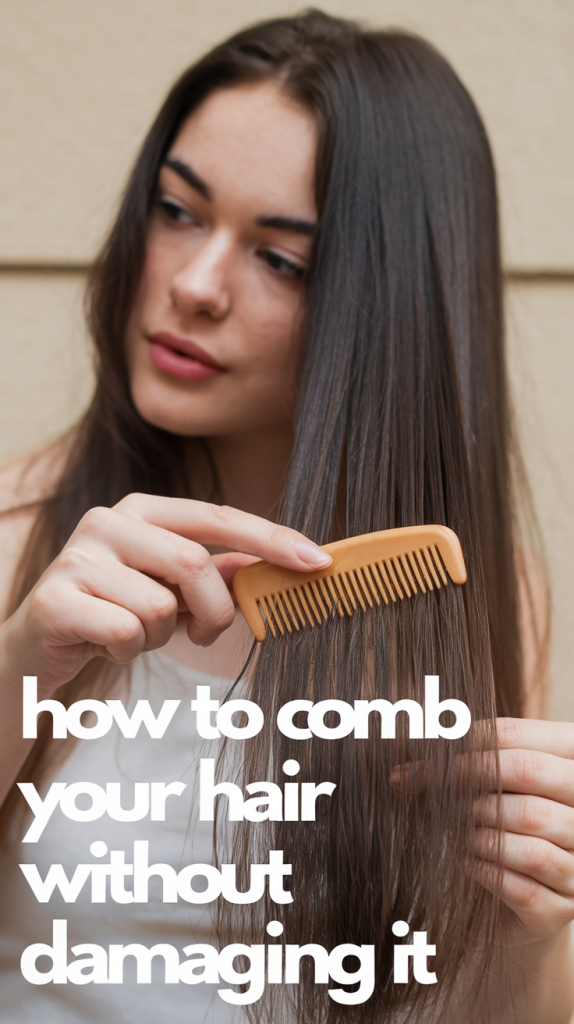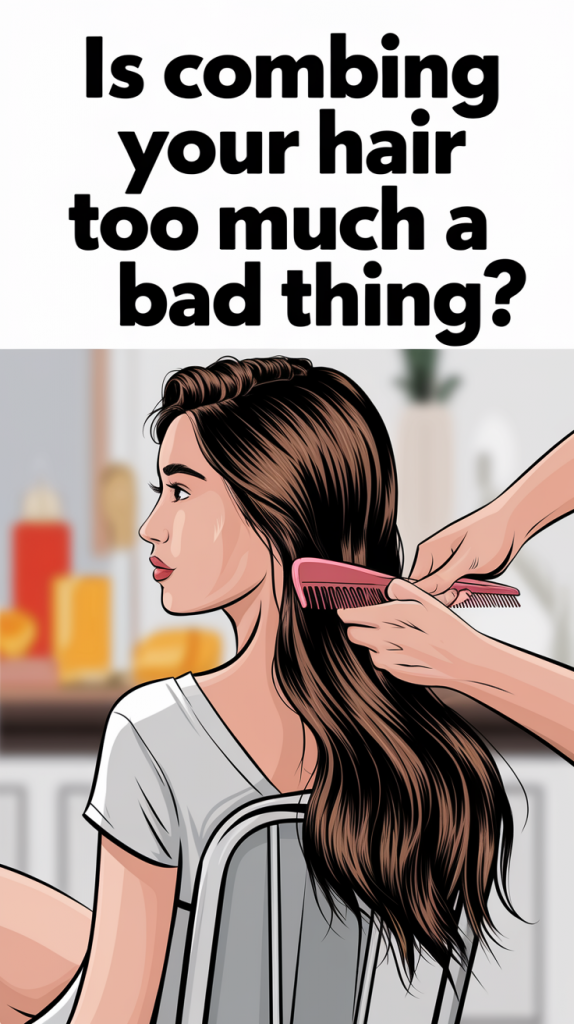Is Combing Your Hair Too Much a Bad Thing?
Sometimes I get to think that how often I comb my hair and whether it is doing more harm than good, I have seen this situation and I have imagined it many times. Me, I can point out a few moments where I thought my combing routine was really perfect only until I suddenly noticed the split ends and hair shedding. This experience has made me realize that it is possible to damage ones’ hair by making the mistake of combing it too much. Over-combing your hair and the right balance to find it are the things that this article will talk about. Also, I will give you some points which are specific to your hair type and are very practical.
The Role of Combing in Hair Care
Brushing goes beyond being a simple grooming right; it has numerous advantages that positively impact the overall state of your hair:
- Detangling: This process facilitates the elimination of knots and tangles thus making hair more manageable and preventing it from matting.
- Natural Oils: This product spreads the natural sebum of the scalp along the hair shaft and thus imparts a polished look and adds moisture as well.
- Scalp Stimulation: It helps in increasing blood circulation and thus may assist in the process of hair growth.
- The process is completing the removal of the dust that has accumulated, the debris, and the dead skin cells.
Yet, if it is excessive, combing can turn from being a good aid to being a bad one.

What Happens When You Over-Comb?
Excessive combing is not only a waste of time but also harming your hair actively. This is how:
Damage to the Hair Cuticle
Excessive combing damages the hair’s outer protective cuticle, which in turn causes:
- Lifeless hair and are prone to frizz.
- The presence of split ends and the tendency to be more brittle.
- Less ability to withstand heat and environmental factors.
Hair Loss and Breakage
Regular and rough combing can lead to the loss of good hair. Consequently, these issues are:
- More hair is falling off daily.
- The tendency of hair roots to weaken, particularly seen in thin or fine hair.
Scalp Issues
Excessive combing can cause irritation to the scalp, which in turn may lead to the following:
- Erythema and tenderness.
- Deterioration of conditions like dandruff or psoriasis.
Hair Type and Combing Frequency
Distinctive types of hair need distinct methods of combing. Some of the types and conditions are particularly sensitive to over-combing. The table below will help you find the right amount of combing:
| Hair Type | Frequency | Recommended Tool | Tips for Best Results |
|---|---|---|---|
| Straight | 1–2 times daily | Paddle brush or fine-tooth comb | Focus on distributing oils evenly. |
| Wavy | 1–2 times daily | Wide-tooth comb | Comb gently to maintain wave patterns. |
| Curly | 1–2 times per week | Wide-tooth comb or fingers | Comb only when wet to reduce frizz. |
| Coily | Weekly | Fingers or detangling brush | Use a leave-in conditioner for easier detangling. |
How to Comb Your Hair Without Damaging It
To ensure the safety of your hair, adhere to these most effective practices:

Choose the Right Tool
- The best way to detangle hair without any breakage is to use wide-tooth combs.
- It is advisable to not use combs which have sharp or jagged edges since these may trap your hair.
Be Gentle
- Begin at the tips and ascend to the base.
- Don’t be in a hurry—take your time, especially with tangles, as rushing can cause damage.
Use Detangling Aids
Sprays and conditioners that are used as leave-in reduce friction and make combing easier. Detangling.
Safe Combing Tools Quick Comparison:
| Tool Type | Hair Types | Advantages | Disadvantages |
|---|---|---|---|
| Wide-Tooth Comb | All, especially curly/coily | Gentle on hair, prevents frizz | May not remove all tangles. |
| Paddle Brush | Straight, wavy | Great for detangling quickly | Can cause breakage if overused. |
| Finger Detangling | Coily, curly | Extremely gentle, no tools needed | Time-consuming. |
Alternatives to Over-Combing
In case you doubt about over-brushing, take a look at these alternatives:
- Finger detangling is a technique that is particularly appropriate for curly or coily hair to lessen friction.
- Hairstyles that protect the hair, such as braids, buns, or twists, require less combing.
- Leave-In Products: You should apply the leave-in conditioner or detangling spray so as to reduce the knots and strand protection.

The Science of Hair Damage
Keratin proteins along with cuticle surrounds a hair. The outer layer which is damaged by over-combing becomes porous and weak for hair. It is further added to the breakage, frizz, and dullness hair. In addition, the stressed scalp due to combing can also be a disruption factor for the hair cycle.
FAQs About Combing Your Hair
Q: How frequently do I need to comb my hair? A: Combing hair is generally not more than 1-2 times daily for detangling and evenly distribution of oils.
Q: Is it possible for your hair to be lost for a long time owing to excessive brushing?A: If you brush your hair excessively, it may lead to temporary hair loss due to damage or stress, yet serious and permanent effects are uncommon.
Q: Is it advisable to comb wet hair?A: Wet hair is more fragile, thus if you really need to detangle it, use a wide-tooth comb and be gentle.
If you don’t comb or brush your hair then you will only make the tangles worse as time goes by. This will cause the tangles to break and it will become difficult for you to manage your hair.
Q: Is using finger detangling more effective than combing?A: Finger detangling is very gentle and is the best way to minimize breakage, particularly in curly or coily hair.
Conclusion
According to my personal experience, combing can be both beneficial and harmful: it is a must for good hair health if it is carried out within certain limits. On the other hand, excessive combing may result in breakage, scalp irritation, and even hair loss if not done properly. In order to avoid these problems and to have your hair look at its best, you just need to know the type of your hair, get the appropriate scissors, and practice protective measures.
